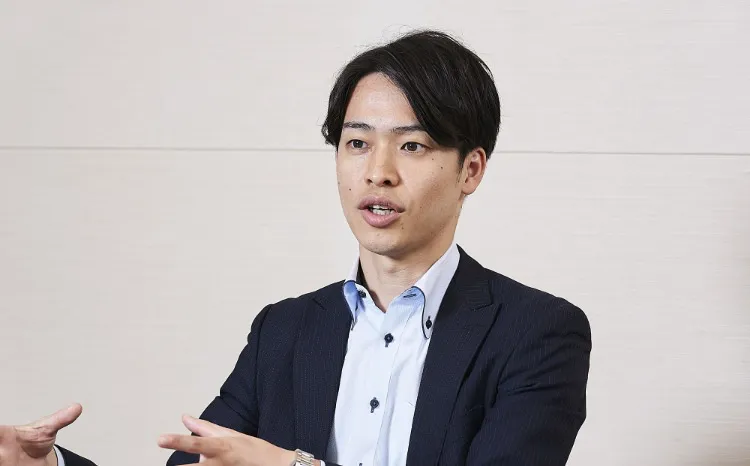As the transition to a decarbonized society is progressing by 2050, hydrogen is attracting attention as a next-generation energy source. Hydrogen doesn’t emit CO2 when combusted, thus it is able to replace fossil fuels such as oil and coal.
In May 2023, the United States announced its Clean Hydrogen Strategy, which aims to increase the production of clean hydrogen to 10 million tons per year by 2030.
Similarly, EU has also set a goal of increasing their production and imports of hydrogen to 10 million tons per year each by 2030.
On the other hand, hydrogen can be costly to produce and to develop supply infrastructure, and its energy price can be several times higher than that of existing fuels. While there are many challenges to promote the use of hydrogen, in Japan, efforts are underway to address the price gap between existing fuels and hydrogen, as well as to prepare government support for infrastructure development.
Japan Hydrogen Association (JH2A)—co-chaired by Sumitomo Mitsui Financial Group, Inc. (SMFG), Toyota Motor Corp., and Iwatani Corp.—established the “Japan Hydrogen Fund” on August 27, 2024 with Sumitomo Mitsui DS Asset Management Company, Ltd. and Advantage Partners, Inc. The fund aims to drive investments in hydrogen-related companies and projects to build a hydrogen supply chain.
In this interview, Shota Nagasawa, Kento Shirono, and Mamiko Masutani from SMFG’s Sustainable Solution Department share insights into their early efforts in the hydrogen sector, the obstacles they face, and their vision for the future of the hydrogen market as SMBC Group.
Initiatives Since the Dawn of the Hydrogen Market
In 2015, SMBC Group became the first in Japan to lease mobile hydrogen stations for commercial use. Subsequently, the group actively engaged in the hydrogen sector, including participation in consortiums such as the Hydrogen Utilization Study Group in Chubu. Why did they take such proactive steps during the early stages of the market? This was related to the potential of hydrogen, which offers multifaceted benefits.
Nagasawa: “As global efforts toward decarbonization accelerate, hydrogen has the potential to play a significant role. One of its key features is that it does not emit CO2 during combustion (see note). Additionally, hydrogen is said to be easier to transport and store for a long time compared to electricity. It can be utilized in a wide range of applications, including power generation, heat sources in steelmaking and boilers, and as an industrial raw material, contributing to decarbonization across various sectors. However, even if it has these benefits, its value will not be realized if it is not widely used. To address challenges for developing hydrogen value chain, SMBC Group has initiated efforts from an early stage.”


(note) Expanding the use of “low-carbon hydrogen”, which emits less than a certain amount of CO2 associated with hydrogen production, is being considered, such as hydrogen derived from renewable energy, fossil fuels combined with CCS (Carbon Dioxide Capture and Storage, a technology that separates, captures, and stores CO2 underground, etc.).
For financial institutions, it isn’t always common to engage in creating entirely new markets. Typically, Financial institutions often provide support when projects reach a certain level of commercialization. However, the hydrogen field was an exception, as Masutani explains.
Masutani: “Hydrogen has the dual potential to solve the social challenge of decarbonization, while achieving economic growth by creating new business opportunities,” shares Masutani. “In general, it will take decades or more to create a new market. However, we need to accelerate developing hydrogen market to meet the 2050 carbon neutrality goal. Achieving this requires coordinated efforts between the public and private sectors, transcending the traditional boundaries of financial institutions.”


To realize a hydrogen society, Japan formulated the world’s first national hydrogen strategy, the “Basic Hydrogen Strategy,” in 2017. In October 2020, the administration of then-Prime Minister Yoshihide Suga declared that Japan would aim for carbon neutrality by 2050, recognizing decarbonization and energy transition as critical issues. Currently, hydrogen is positioned as one of the essential energy for achieving decarbonization, with a national target set to supply 3 million tons per year by 2030.
Nagasawa:“Currently, there are about 2 million tons of hydrogen annually used in Japan,” Nagasawa notes. “However, most of it is produced as by-products at steel mills and oil refineries, and consumed at the plant. This means that hydrogen is not yet widely distributed as a fuel for general use. To achieve the government’s target of supplying 3 million tons by 2030, it is essential to scale up hydrogen production and establish the foundation for its use in various applications.”


How would our lives change if a hydrogen society is realized in the future? For instance, it could be blended with coal or natural gas as a fuel for thermal power plants, used in boilers and burners in factories, and play a crucial role in steel manufacturing. Additionally, hydrogen has significant potential for producing synthetic methane and sustainable aviation fuel (SAF) when combined with CO2.
In more familiar cases, hydrogen refueling stations—designed to refuel fuel cell vehicles—will spread across cities, making it easier to purchase and use fuel cell vehicles. Commercial vehicles such as trucks and buses could also use hydrogen.
In addition to such use in the transportation field, hydrogen fuel cells, known for their long-term storage capabilities, could also provide backup power during disasters.
In this way, in order to expand the use of hydrogen in society as a whole, it is essential to develop a supply infrastructure. On the other hand, in Japan, it is difficult to supply enough to meet domestic demand. It is assumed that imports from overseas will be the main focus, so there are many issues in building an international supply chain.
Nagasawa:“Natural gas, since its first import as liquefied natural gas (LNG) to Japan 60 years ago, gradually gained wider use as production facilities and supply chains were developed over time. Similarly, promoting hydrogen imports requires simultaneous efforts to develop new infrastructure and expand its usage. On the other hand, the substantial capital investment required to establish an extensive supply chain presents a significant hurdle in making investment decisions.”
Even if supply chains are successfully established, it is difficult to create demand if prices remain high. As in the U.S. and Europe, it is necessary to revitalize the hydrogen market in terms of both supply and demand.
Shirono:“The high price of hydrogen is a bottleneck,” Shirono acknowledges.
“Demand is still limited because there are not many operating companies that have introduced hydrogen at this stage. To expand its use, it is important to create an entire supply chain with the aim of lowering prices from the perspective of both demand and supply expansion.”


Masutani:“This is an unprecedented challenge,” Masutani adds. “Companies and organizations beyond industry boundaries are actively collaborating to build and revitalize the hydrogen market, paving the way for a hydrogen society.”
Establishment of Japan Hydrogen Association and Launch
of the Japan Hydrogen Fund
In December 2020, JH2A was founded to work together with various industries to address challenges in building a comprehensive hydrogen value chain. JH2A is comprised of companies and organizations from a variety of industries such as automobile, power companies, oil distributors, heavy machinery manufacturers, financial institutions, and research institutions. It is responsible for business creation and policy recommendations for the social implementation of hydrogen. SMFG, along with Toyota Motor Corporation and Iwatani Corporation, serves as a co-chair of JH2A and leads its Finance Committee, which focuses on exploring financing solutions for hydrogen projects.
Nagasawa:“Key challenges in the hydrogen industry—such as reducing supply costs, advancing new technologies, establishing safety regulations, and securing project financing—cannot be resolved by a single company alone,” explains Nagasawa. “JH2A was established to address these issues collectively across industry boundaries.”
“In order to reduce hydrogen supply costs in this nascent industry, it is necessary to promote the study of concrete projects that will lead to the supply and use of hydrogen in the private sector, as well as support from the government,” Nagasawa adds. “The Agency for Natural Resources and Energy in Japan is discussing policy measures, including a subsidy program planned to start. JH2A also plans to consider demand-generating projects and provide funding through the hydrogen fund, accelerating hydrogen’s social implementation.”
While immediate efforts focus on building the infrastructure for hydrogen production and distribution, the importance of public understanding cannot be overstated. For a hydrogen society to fully materialize, consumer awareness and education must play an important role. JH2A is actively involved in grassroots initiatives aimed at promoting hydrogen knowledge and fostering interest among future generations.
Nagasawa:“JH2A organizes workshops for elementary school students, where they conduct experiments to produce electricity from hydrogen, as well as lectures for university students and exhibitions targeting the general public,” Nagasawa notes. “From a long-term perspective, engaging with younger generations is vital for widespread adoption. We hope these experiences will inspire children to think about their future career paths while sparking broader interest in hydrogen and energy among consumers.”
With the creation of new hydrogen businesses, the circulation of funds through the Hydrogen Fund, and the efforts to educate and inspire future generations, how will SMBC Group continue contributing to the development of a hydrogen society? They share their perspectives on the group’s future direction.
Nagasawa:“In Japan, we anticipate that projects in commercialized phase will increase once subsidy systems and other support mechanisms are implemented. Financial institutions will need to play a critical role in financing, and I hope to be involved in the formation of impactful projects.”


Masutani:“I would like to leverage SMBC Group’s extensive network in Japan and overseas to support hydrogen initiatives on a global scale.”
Shirono:“Having engaged with hydrogen since its early stages, SMBC Group’s accumulated expertise and collaboration with industry players serve as significant strengths. As industry-wide initiatives gain momentum, we aim to become the name that comes to mind when people think of hydrogen.”
The realization of a hydrogen society represents a key pillar for the decentralization of the energy system and the promotion of carbon neutrality. Achieving this vision requires collaboration across industries and companies to develop new technologies and infrastructure.
In this process, companies that previously had no interaction or were in competitive relationships are now engaging in serious discussions and building cooperative relationships, united by the shared goal of promoting hydrogen and energy transition. Financial institutions are also taking on challenges by working alongside companies, sharing risks, and striving to create new businesses and markets.
These efforts are not merely about accelerating hydrogen adoption, as they also symbolize the co-creation of a new society. This collective endeavor is a significant step toward building a more sustainable and prosperous future for all.




